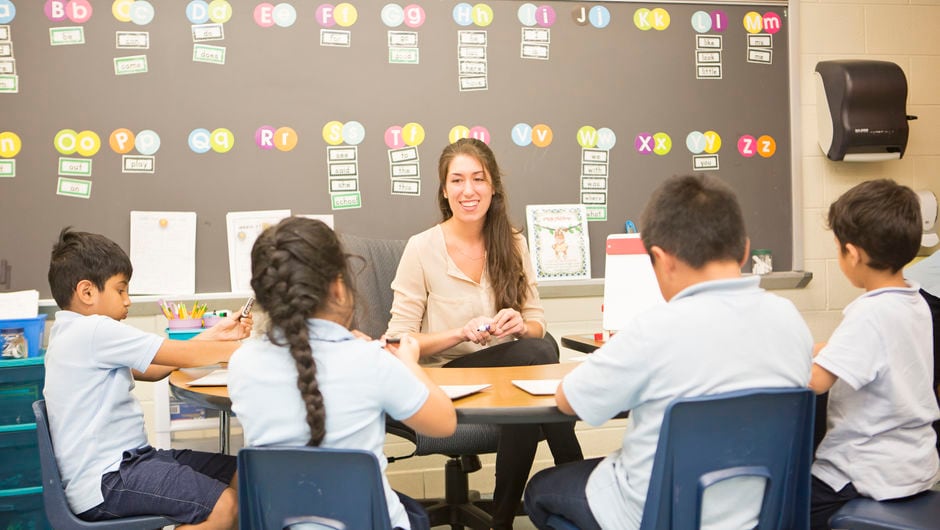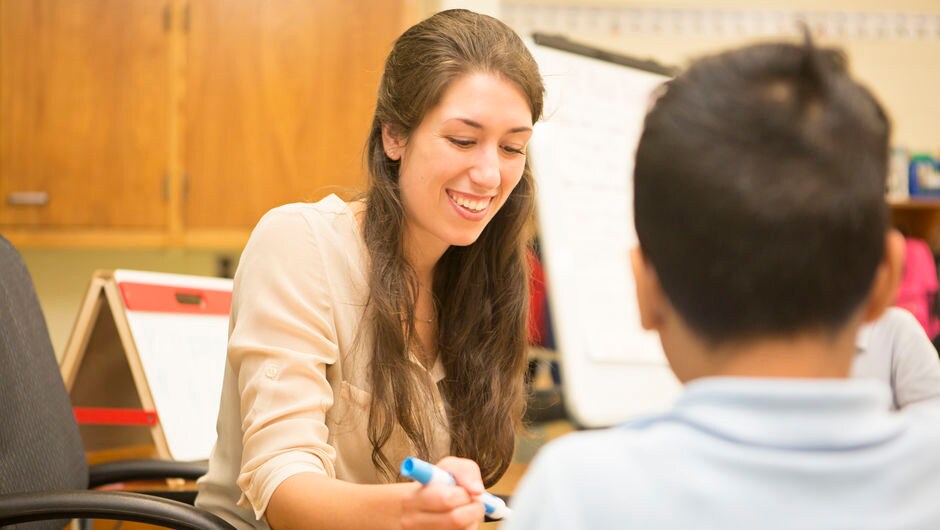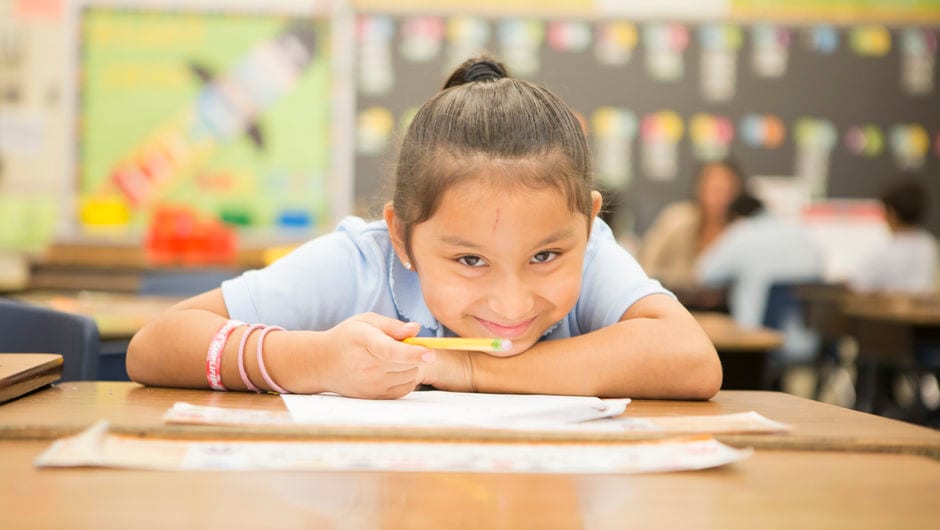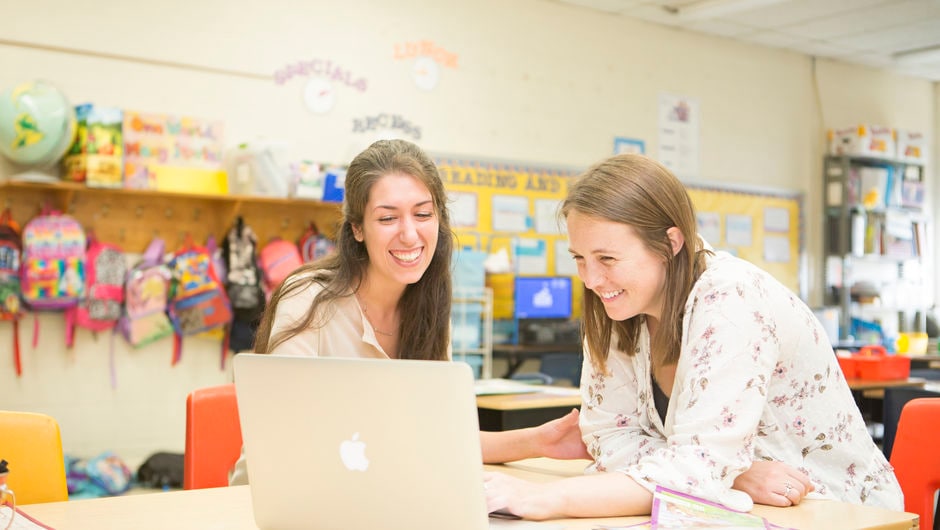How Natalie Frank Creates a Culture of Inclusivity

February 20, 2019
Natalie Frank (D.C. Region ‘17) is a first-grade teacher at Templeton Elementary in Prince George’s County, Maryland. Templeton Elementary’s student population speaks a total of 31 languages. To truly make her students feel at home in the classroom, Natalie works hard to create a culture of inclusivity and encourages her students to embrace their differences. Her hard work shows, and her students have built a supportive learning environment for each other.
To start off, who is a student you have worked with who showed a lot of growth and what did that look like?
I had a student last year, Alex, who was struggling to keep up academically, but he brought so much joy to the classroom. We had lunch together almost every day of the year, working on counting to 20. The day he learned to count to 20, he was so excited that we did it all day long. He would raise his hand and ask if he could show the class. Everyone would cheer. What inspired me the most was how impressed his classmates were. At six years old, they might have seen this as something that was easy, but they recognized the triumph. They would say, “Alex do it again! Do it one more time!”

You and Alex spent a lot of time together. Are there other students who have especially inspired you?
I work in a school where students come from all over the world. Last year, we started reading Malala’s Magic Pencil. The book was about a girl who drew pictures, and anything she drew became real. I gave them a writing exercise—if you had a magic pencil, how would you change the world? And three of my students from Afghanistan said if they had a pencil they would erase the Taliban and draw them back kinder. I had one student say they would erase racism. We talked about what you could draw, but not about what you could erase, but they took the assignment and brought so much life to it.

As a teacher of younger students, I imagine it might be harder to weave in social justice issues like those into your classroom. How do you incorporate that into your teaching?
Last year, I was starting to feel like the books in my curriculum didn’t lead to the conversations my students wanted to have. So I did a lot of research on books that were closer to their experiences, lives, identities, and interests. I found about 15 children’s books that focused on homelessness, immigration, civil rights, visibility for the LGBTQ+ community, self-love, and more. Books that are mirrors and windows, reflecting their own lives and being windows into topics they might not know about.

It sounds like discussing issues that are important to your students is important to you. What are some other values you have and uphold in your classroom?
Over 90 percent of the students in my school are English Language Learners, and there are 31 different languages spoken here. One thing I think about a lot as an educator is how I can help my students realize that their differences are also strengths—in our classroom, school, and community. I try to create a classroom community where children aren't friends despite their differences and identities are erased, but rather students see their differences as opportunities to learn from one another, to cultivate a greater sense of empathy for others, and deepen their respect for their own identity and the identities of others.
What are the moments in your class when you’ve seen that community growing?
At the beginning of the year, we learned greetings in other languages. Whenever it’s a student's birthday, we sing happy birthday in the language they speak at home. This year, one of my Farsi-speaking students came in during her birthday. Before I could even ask her to teach us to sing in Farsi, two of her friends—one who also speaks Farsi and the other who speaks French and is from Cameroon—they popped up and sang to their friend in Farsi. I was so impressed that my one student who didn’t speak Farsi had learned the melody and the pitch and the words.

Are there moments in the classroom that make you smile or make everything worth it?
Definitely. This year we’ve been working really hard on understanding consent. They understand to ask for permission and respect other’s autonomy, and we’ve been thinking empathetically about the other person and what they might want and need. So this year, at one point, the principal walked in my room, and one of my students popped up and asked, “Ms. Harris can I give you a hug?” And she said “Not right now, you’re learning.” And the student looked at me and said, “Oh! I don’t have consent, so i’ll sit back down.” It was great to see her make that connection and to take that “No” so well. It’s not a rejection, but it’s her body. Seeing them independently apply these important ideas without me reminding them has been really awesome.


